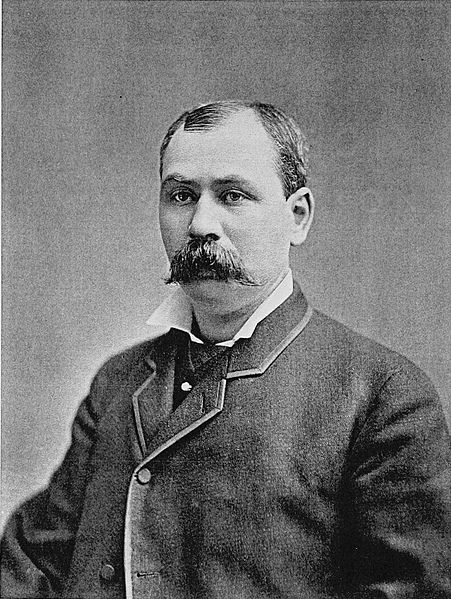Last year I began the slow process of completing the supporting character profiles for the historical figures that appear in The Alienist. To do this, I have aimed to read at least one biography for each of these figures to aid me in completing their profile. While this proved to be a fascinating process for the first figure on my list, Police Superintendent Thomas Byrnes, it has resulted in my putting together a considerably longer profile than I had originally intended! As a result, I have only posted a summary of Byrnes’ role in the novel on the supporting characters list, and have decided to post his full character profile here instead as a history blog. So, if you are interested in learning more about this complex and interesting character, please read on. For any interested visitors, you can find the sources used in putting together this profile at the conclusion of the blog.
Early Life and Career
Although Thomas Byrnes, former Police Superintendent and Chief Inspector of the Detective Bureau, only appears in The Alienist on one occasion, he plays a prominent role in the novel behind the scenes and is mentioned a number of times throughout the text. Born in Ireland in 1842, Thomas arrived in New York City as a 10 year old when his family fled the Potato Famine, and grew up in the notorious Five Points district. When his father began drinking heavily and walked out on the family following the death of Thomas’ younger brother, Thomas and his mother were left to fend for themselves. To help them get by, Father Coogan of St. Patrick’s Cathedral managed to obtain a position for Thomas as helper in a firehouse, while his mother worked as a seamstress and his two sisters found employment as house maids. Even though Thomas had never been formally schooled, Father Coogan helped in this as well by providing his young charge with books for self-education.
When the Civil War broke out in 1861, 19 year old Thomas joined Ellsworth’s Zouaves, the Eleventh New York Volunteer Infantry Regiment, and served during the Battle of Bull Run. He did not otherwise see much combat during his two years in the Union Army, and returned to New York following his discharge from the service in 1863. Shortly after this, he joined the New York City Police Department as a patrolman, and saw his first major action when the draft riots broke out. During the riots, in which a mob of Irish immigrants caused nearly $3 million of damage to the city and killed eighteen men during a week long spree following the first military draft, Thomas was recognised for his valiant efforts to protect the 233 children in the Orphan Asylum for Coloured Children, as well as assisting Police Superintendent John A. Kennedy who had been violently attacked and was lucky to escape with his life. Byrnes quickly rose through the ranks during the period that followed, becoming a Sergeant in 1869 and Captain of the Fifteenth Precinct in 1870 at only 28 years of age.
Byrnes’ posting in the Fifteenth Precinct undoubtedly helped his remarkable rise from Captain to Chief Inspector of the Detective Bureau during the ten years that followed. During his time as Captain, Byrnes investigated a myriad of cases ranging from petty theft to murder, and his name appeared in newspaper crime reports on an almost weekly basis. None of his cases, however, were was as well-publicised as the Manhattan Savings Institution heist of 1878. The robbery remains one of the greatest in New York’s history, with $3 million in bonds and cash (over $50 million in today’s dollars) stolen from the bank’s vault. During the long and complex investigation that followed, Byrnes successfully identified most of the culprits but there was a frustrating lack of convictions in the case due to the suspected bribery of jurors. Even so, the case helped to cement Byrnes’ reputation as an unrelenting crime fighter willing to go to any lengths to protect the interests of New York’s wealthiest citizens.
| Continue reading →

